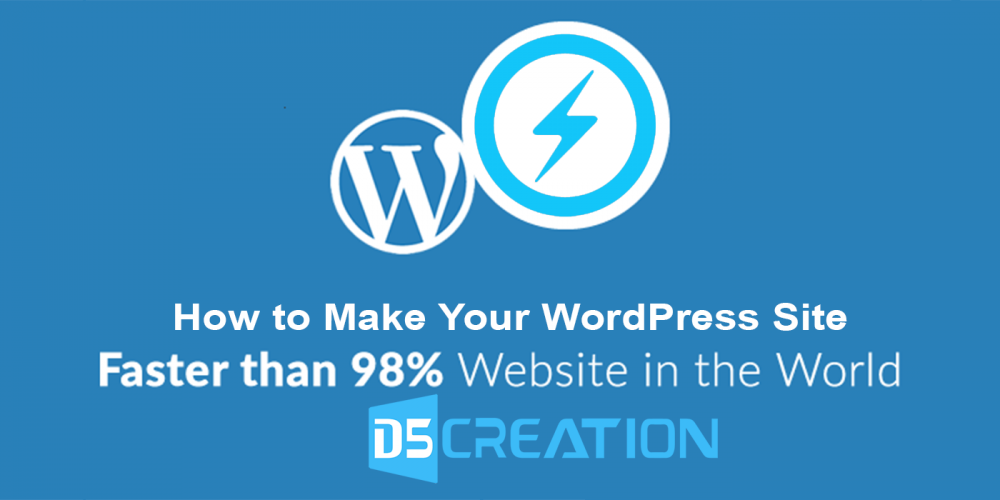


Page loading speed is directly proportional to the success of any website. If your website loads slowly, it may drive your visitors away. Slow page-load speed can not only be frustrating for the users, but it may also lead to higher bounce rate and site abandonment. Now-a-days website performance also influences your rankings in search engines. In a nut-shell, if you want more organic traffic, higher page-views and better revenue from your website, you must leave no stone unturned to make your website fast and responsive.
WordPress is an amazing content management system, but being a robust platform, it can exhibit performance issues if not optimized properly. Even if your WordPress website responds faster than your rivals', there may still be a lot of room for improvement.
In this article, we are going to explore some proven practices for optimizing your WordPress website, thereby ensuring the best user experience for your visitors.
Content Delivery Network, abbreviated as CDN, is a network of distributed servers located at multiple geographic locations. A CDN has the ability to clone your website on all of their location nodes. When a visitor sends a browser request to access your website, it will be served by the nearest server location, rather than the main datacenter of your hosting service provider. Serving requests from the closest location reduces the round-trip-time for data transfer, thus loading your web pages in quicker time.
There are quite a few CDN providers that offers free content delivery services. While CloudFlare is the most popular choice, you may also try out Incapsula, jsDeliver and CoralCDN to speed up your WordPress website.
You can enable gZIP compression to reduce the size of data that's being transferred between your server and the visitors' browsers. It's a technique to compress the size of your media files, CSS and JavaScript files by wrapping them together in a single container.
When you enable gZIP compression, the server wraps the content in a compressed file before they are transferred over the internet. The visitor's browser, on the other hand, decompresses the content before rendering it. It can significantly lower the size of data being transferred, helping the browser display the webpages with minimum lag.
You can simply add a few lines of code to your .htaccess file to enable gZIP compression for your WordPress website -
1 2 3 4 5 6 7 8 9 10 11 12 13 14 15 16 17 18 19 20 21 | ## ENABLE GZIP COMPRESSION ## AddOutputFilterByType DEFLATE text/plain AddOutputFilterByType DEFLATE text/html AddOutputFilterByType DEFLATE text/xml AddOutputFilterByType DEFLATE text/css AddOutputFilterByType DEFLATE application/xml AddOutputFilterByType DEFLATE application/xhtml+xml AddOutputFilterByType DEFLATE application/rss+xml AddOutputFilterByType DEFLATE application/javascript AddOutputFilterByType DEFLATE application/x-javascript ## ENABLE GZIP COMPRESSION ## |
Post revisions add an unnecessary burden to your WordPress database. Having too many revisions can consume lots of database space and delay the execution of database queries. Due to this, the page rendering process may get slower as the server would consume more time searching through multiple post revisions in the database.
By default, WordPress stores unlimited number of post revisions, although this is generally not required. The best way to deal with this issue is to restrict the number of active post revisions to something more practical. You can simply add the below given line of code to your WordPress configuration file (wp-config.php) to limit the number of revisions WordPress keeps for each of the posts/pages.
1 | define( 'WP_POST_REVISIONS', 3 ); |
WordPress will now keep upto 3 latest revisions of your posts/pages, discarding the older versions automatically.
Plugins are an integral part of any WordPress website. The availability of tons of useful plugins make life a lot easier for WordPress administrators, but that doesn't mean all of them are well-coded. You should exercise caution while installing plugins. Go for the ones that are regularly updated and are compatible with the latest version of WordPress.
For superior performance, try to limit the number of active plugins to the absolute minimum. All the installed plugins, no matter active or disabled, have hooks into your WordPress install, causing additional database load and unnecessary CSS/JS/HTTP requests. If you have plugins that you are no longer using, you should deactivate them immediately, or better remove them altogether for improved performance.
Last but not the least, your theme plays a significant role in the performance of your WordPress website. A badly coded theme can add unnecessary weight to your page, slowing down the page-loading speed to a great extent.
Go for responsive design that has been optimized for desktops, tablets and mobile devices. It is highly recommended to opt for a WordPress theme or framework that has been coded cleanly with valid HTML/CSS markup.
The best way to deal with the uncertainty of optimized themes is to choose a theme that has been built by a reputed WordPress theme development company. D5 Creation is an excellent choice for quality WordPress themes. All of their themes are not only coded according to the modern web standards, but these are also incredibly fast, easy to operate and highly secure. D5 Creation makes it a point to roll out regular updates for each of the themes, so compatibility with the latest version of WordPress should never be an issue.
Optimizing your website for speed is no longer an option, it's an absolute necessity for the success of your website. We hope this optimization guide would help you learn some useful practices to boost up the speed of your WordPress website. Try out a few of these optimization techniques and you will definitely experience a great deal of improvement in the performance of your WordPress website.
Comments are Closed